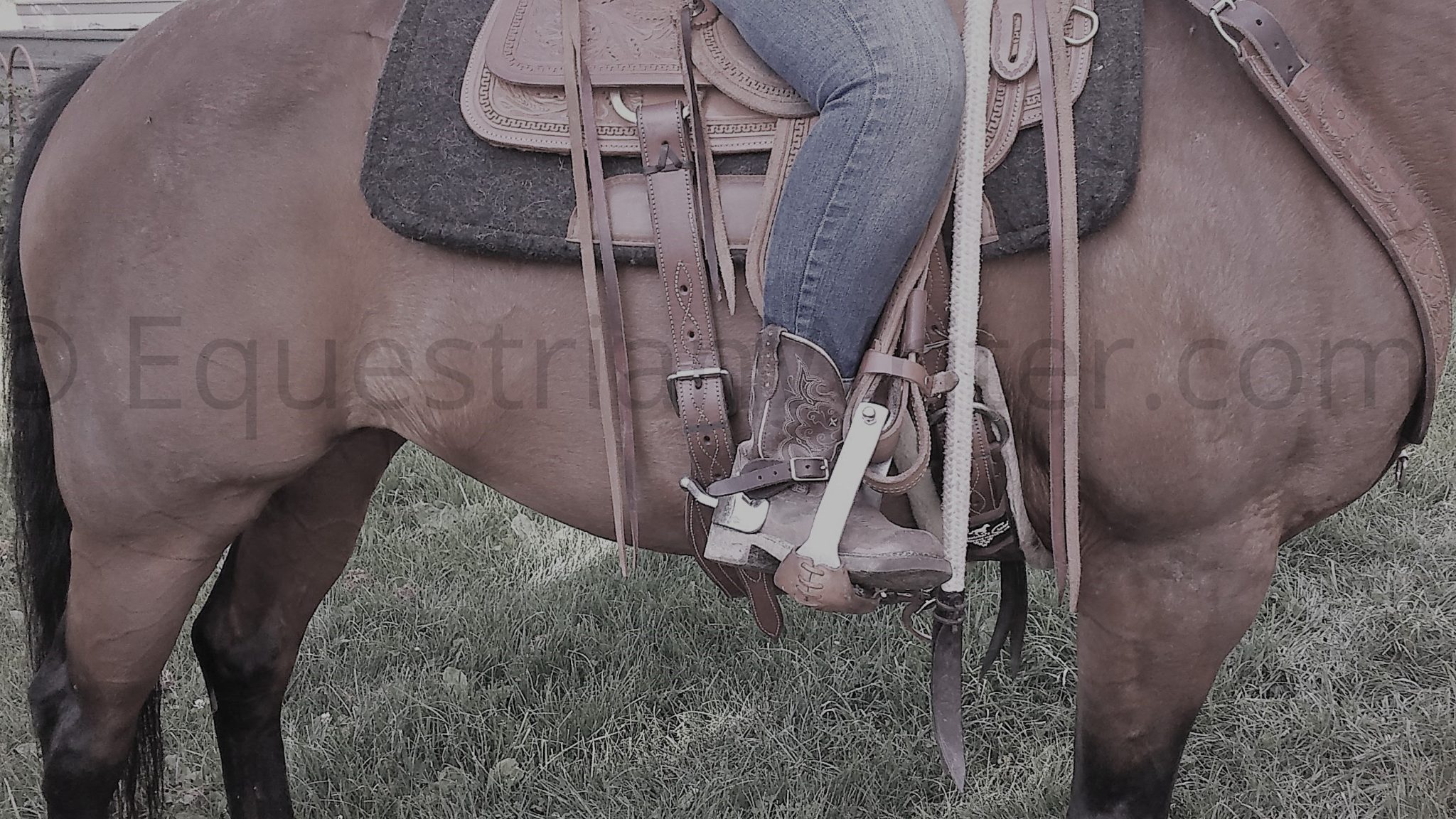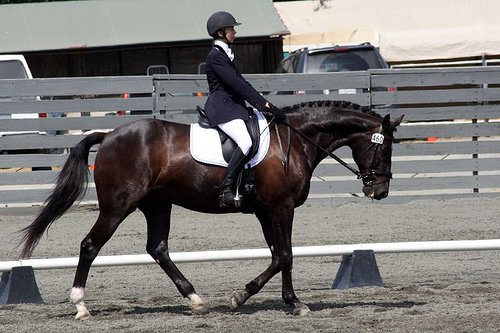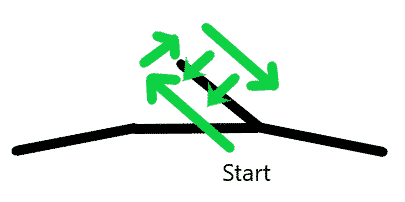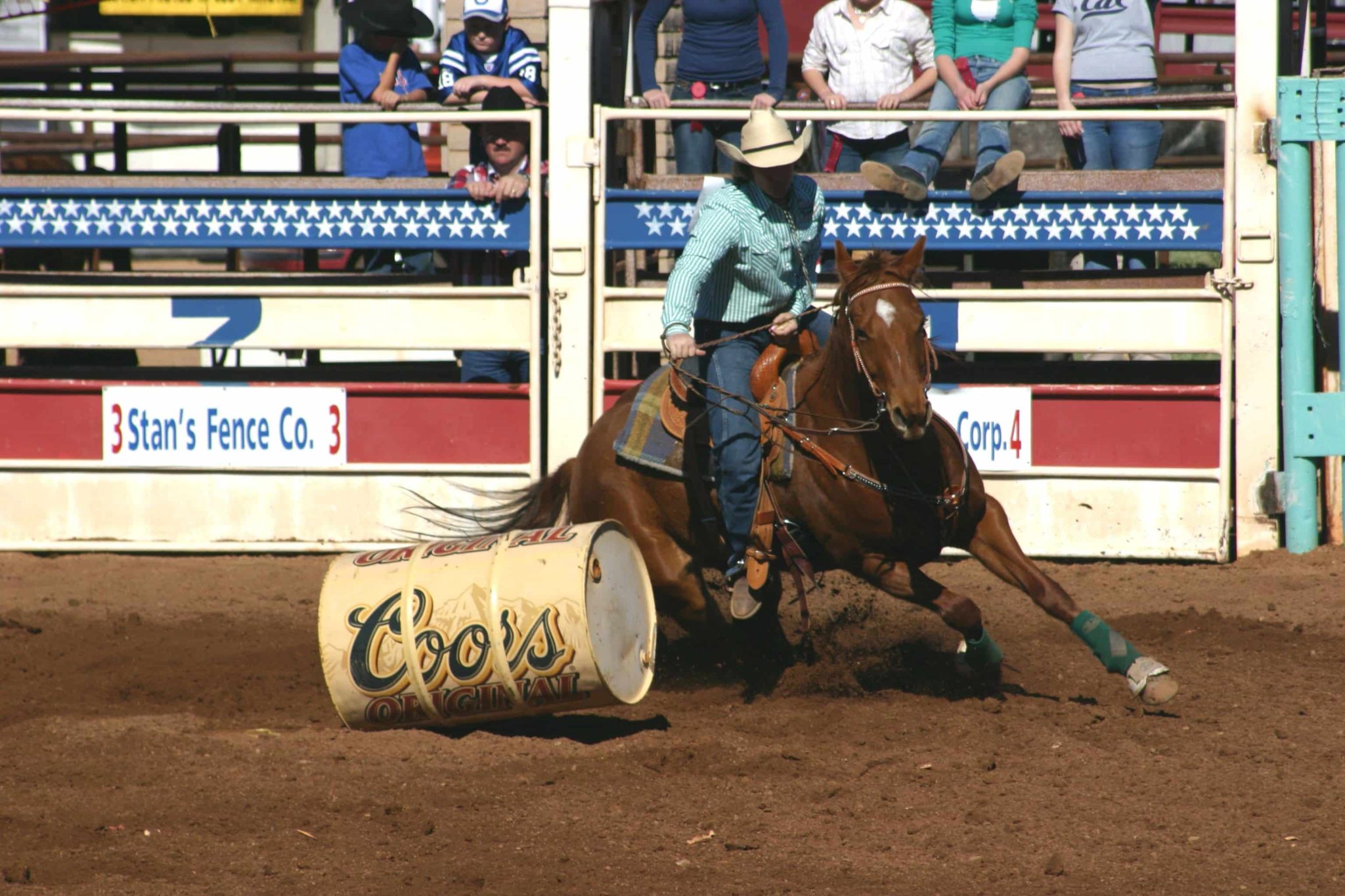
Sidepassing is an important maneuver to master for the western showpen. Many pattern classes – especially ranch horse classes – will ask for sidepassing maneuvers. Sidepassing can be done over logs, but it is also incorporated into maneuvers such as opening gates and picking objects up off of a barrel. As with any maneuver, we start by breaking the sidepass down into its most basic elements.
Elements of the Sidepass
Yielding the Hindquarters
Before you begin teaching the sidepass, it is vital that you have a solid yield of the hindquarters as this is the starting point for the sidepass. To break it down even further, your horse should move off your leg lightly and promptly and he should be able to yield the hindquarters from the ground.
Momentum
The sidepass requires a lot of lateral movement. There are two techniques for teaching the sidepass; the fence technique and the yielding technique. Technically they both involve yielding, but one more so than the other. Personally, I don’t like the fence technique, but many trainers have great success with it, so I will include it in case someone has a horse who needs it.
The Yielding Sidepass
Prerequisites
1. Move off the rider’s leg lightly
2. Respond to light rein pressure in a snaffle (this should never be taught in a leverage bit!)
3. Yield hindquarters a full turn
4. Yield forequarters a quarter turn
5. Be soft in the poll
6. Have enough topline to bring the back up and get his hocks under him
You can use spurs for this. I often use ball spurs for the first ride or so because I don’t like the sharp rowel spurs. Some horses don’t need them though. If your horse is lazy and has a habit of dragging the hind end I recommend you carry a dressage whip so you can hustle the hindquarters to catch up with the front end if need be.
A horse who is very stiff through the poll and neck is not ready for this exercise. Your horse needs to be able to be light in a snaffle bit and you need to be able to take contact with only the tips of your fingers and have your horse soften at the poll.
Your horse needs to be able to yield the hindquarters and forequarters off of leg pressure without much fuss. He should be light and responsive. Sidepassing requires some collection. A hollow-backed horse will not be able to execute the maneuver correctly.
Teaching the Yielding Method
1. Your horse should already be able to yield the hind quarters a full turn from a standstill. Start yielding a full turn.
2. Once you have built sufficient momentum, slide your cueing leg forward right behind where you would cue for yielding the forequarters. This will “slingshot” you out of the yield and into a step of side pass. Don’t press for more than one. Praise liberally and repeat until you are consistently getting one step.
3. One step will quickly morph into two and three steps. Here the key: don’t ask for more than three. Be happy with three. Practice three until you can get three in your sleep. If you get more, great, but don’t ask for more.
For a full discussion on the reasons behind my three step rule, read my article Practice Until You Can’t Get It Wrong.
Troubleshooting
What if my horse walks out of the yield?
That’s actually a good sign because you need that forward momentum. Don’t punish him for that. Simply reset and start again.
Why does my horse need to know how to yield the forequarters?
Your horse needs to know how to yield the forequarters well enough that when you slide your cueing foot forward his first instinct is to yield away from it. He is already yielding his hindquarters, so if you add the instinctual yield of the forequarters to the momentum that the hindquarters already has, you get both end moving at the same time and it becomes a step of sidepass. I like to call this the slingshot effect.
The Fence Sidepass
Prerequisites
1. Move off the rider’s leg lightly
2. Respond to light rein pressure in a snaffle (this should never be taught in a leverage bit!)
3. Yield hindquarters a quarter turn
4. Yield hindquarters from a walk
5. Yield forequarters a quarter turn
6. Be soft in the poll
7. Have enough topline to bring the back up and get his hocks under him
8. Be comfortable facing a wall or tall fence in close quarters
Again, you can use spurs and I recommend a dressage whip. For the fence method he does not need to be able to execute a full turn. He only needs to be able to yield a quarter turn of each. He also needs to know how to yield the hindquarters from a walk to a stop.
Your horse also needs to be comfortable facing a wall or tall fence in close quarters. You might be surprised how many horses have an issue with this. If you are using a fence, it should be tall enough that the horse cannot get his head over it.
Teaching the Fence Method
1. Place your horse parallel to the fence with the fence to your right.
2. Establish a walk and maintain an even, forward, tempo.
3. Once you have a consistent walk established, half halt to collect the horse and place your right leg back to cue for a hindquarter yield to the left. Your horse should swing around so he is perpendicular to (facing) the fence.
4. Repeat steps 1-3 until your horse is consistently facing the fence willingly and responding lightly to your cues. Once you have master steps 1-3, it’s time to start adding lateral motion.
5. This time when you horse faces the fence, slide your foot forward so that you are cuing in front of where you would cue yield the hind quarters but behind where you cue the yield the forequarters. If you get the timing right the horse should take one lateral step sideways. Don’t press for more than one. Praise liberally and repeat until you are consistently getting one step.
6. One step will quickly morph into two and three steps. Don’t ask for more than three. Practice three until you can get three in your sleep.
7. Gradually practice further and further from the fence until you don’t need it any more.
8. Cue yield the hindquarters from a standstill, ask for a quarter turn and flow right into a sidepass.
9. Ask for the sidepass from a standstill without yielding.
This whole process should take several weeks. Do not rush. Slower really is faster.
Troubleshooting
What if my horse over turns and does not stop facing the fence?
If you are quick enough, you can channel the momentum into the sidepass. Otherwise, I recommend switching to the yielding method.
What if my horse keeps spooking at the fence?
Switch to the yielding method which can be done in the center of the arena or address the spooking and come back to sidepassing once the spooking is taken care of.
Why does my horse need to know how to yield the forequarters?
Your horse needs to know how to yield the forequarters well enough that when you slide your cueing foot forward his first instinct is to yield away from it. He is already yielding his hindquarters, so if you add the instinctual yield of the forequarters to the momentum that the hindquarters already has, you get both end moving at the same time and it becomes a step of sidepass. I like to call this the slingshot effect.









